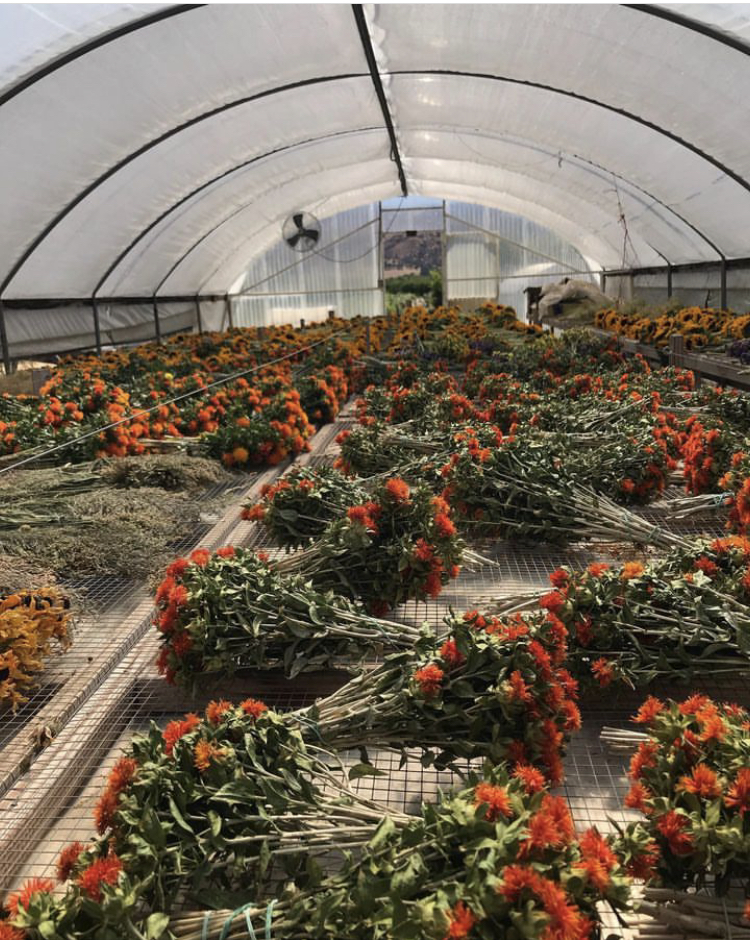As mentioned last week, the major activity recently has been transplanting. We’re still behind schedule, but we’ve gotten a LOT of plants in the ground, including thousands of melons, squash, and cucumbers on Friday. None of that is possible without a lot of behind the scenes work in the greenhouse where we grow those transplants.
Many crops can be direct seeded (meaning putting seeds straight in the ground) and we direct see the vast majority of our crops. We always transplant certain crops, either because they do better that way (flowers especially, but also most of the brassicas – broccoli, cabbage, kale), or they have expensive seed (tomatoes, peppers). With others, it just depends on the time of year; seeds require (relatively) warm soil to germinate, so we transplant them early in the year and direct seed later (like summer squash and melons). Using transplants provides a head start on the season(meaning an earlier harvest), we don’t have to worry about weather (rain and frost), and they are more resistant to pest and weed pressure.

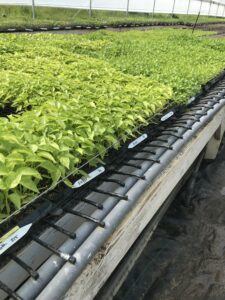
Growing transplants starts in the greenhouse. We fill trays with damp potting mix, add one seed in each cell of the tray, cover up the seeds, then move them to tables where they are regularly watered and given supplemental nutrients. Some seeds need additional warmth to germinate (like peppers and tomatoes) and those trays go on heated tables (see above). Each greenhouse is equipped with different tools for temperature control, including heated tables, fans, vents, and sides that can be rolled up. These tools create a sheltered, supportive environment and a bit more control over growing outside.
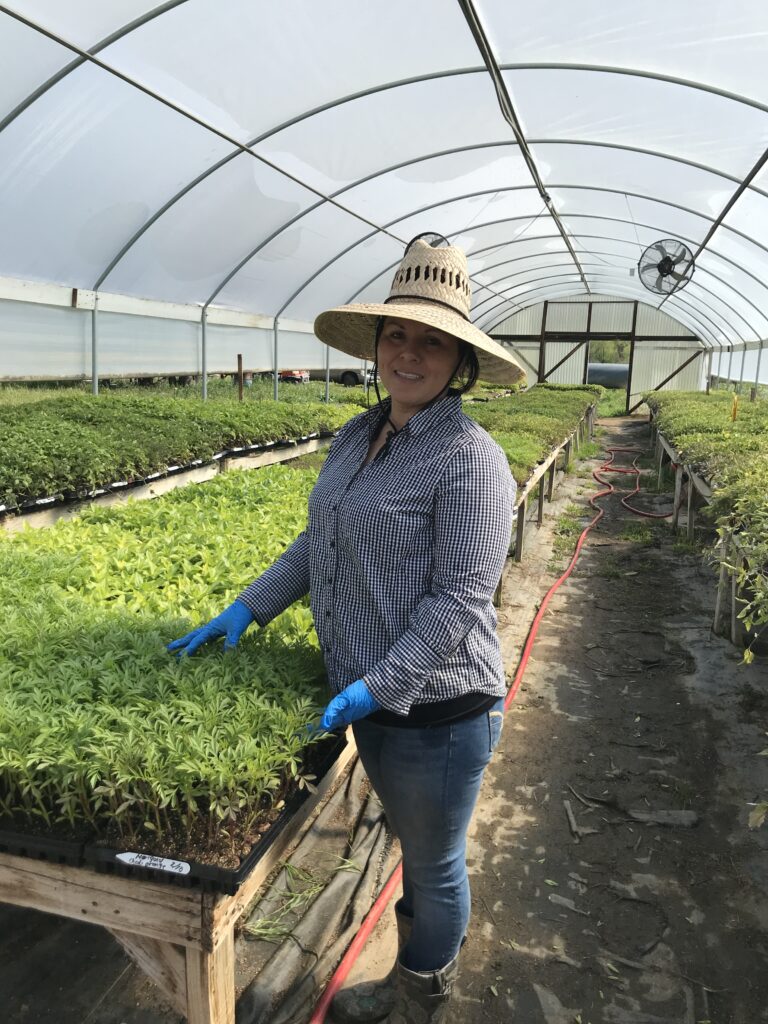
It also creates a lot of work! Growing transplants requires close monitoring to make sure plants aren’t receiving too much or too little water, light, and heat. We open and close vents on the greenhouses throughout the day and water multiple times each day. Chica and Andrew coordinate all of our greenhouse work: seeding, watering, and tending tens of thousands of plants. When you eat a summer tomato, it’s all thanks to their diligent work.
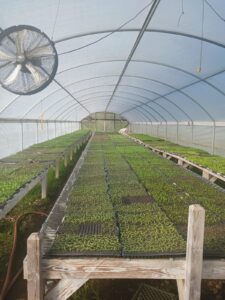
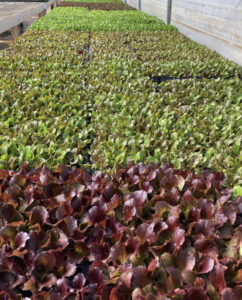

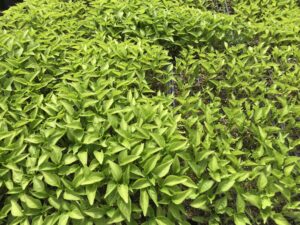
Given all the transplanting activity, our greenhouses have emptied out a bit, but they still are quite full of flowers, tomatoes, onions, eggplants, peppers, and other summer crops (see the photo on the bottom). Two months ago you would’ve seen spring plants, like lettuce and cabbage (the top two photos). There isn’t enough space in our four greenhouses, so we utilize a commercial nursery company (Headstart Nursery) to grow many of our transplants, as do many of our peers. We tell them varieties, quantities, and delivery dates for the plants we’ll need, and almost like magic, they show up in large boxes on a truck (see below). They grow 20-25% our spring and summer transplants and 100% of our fall and winter ones. We use our greenhouses from January to June and the rest of the year when it’s too hot to grow transplants (all it takes is being late to water once and you’ve killed thousands of plants), they grow all of our transplants. They will only grow seeds that have undergone thorough pathogen testing, so if we are using saved seed (we don’t do this as often as we used to, especially with tomatoes after our experience with fusarium in 2021), we have to grow those ourselves.

I asked Andrew what was notable about the greenhouses and our transplants this year:
- We’re a month late planting tomatoes. We moved many of the tomato starts to trays with larger cells so that they had more room to grow before transplanting. The bigger plants meant that we couldn’t use the three-row transplanter and had to use a slower, one-row transplanter. But all of the extra work seems worth it; the plants look great! The first harvest will also be somewhat behind schedule, but not by a full month.
- Not all the transplants look as great as those tomatoes – after too much time in the greenhouse, there are many overgrown, anemic plants. They’ll bounce back, but we’d prefer they looked good from day one. If we’d known how much the weather would delay planting, Andrew would have started everything in the greenhouse three weeks later.
- Every year is different! Despite years of experience, we’re still learning about timing and scheduling. There is huge difference in growth curves based on when seeds are planted; the first round of peppers, seeded in early January, needed 85 days to be ready for transplanting. Seeds planted two months later needed 35; they had warmer temperatures and had more light (increased day length and light spectrum means more photosynthesis).
Soon enough, the last transplants will be planted and the greenhouses will mostly be empty until next January. Mostly because we do use them for a few things – last year we were using some of the space to dry flowers!
Elaine Swiedler, CSA Manager
